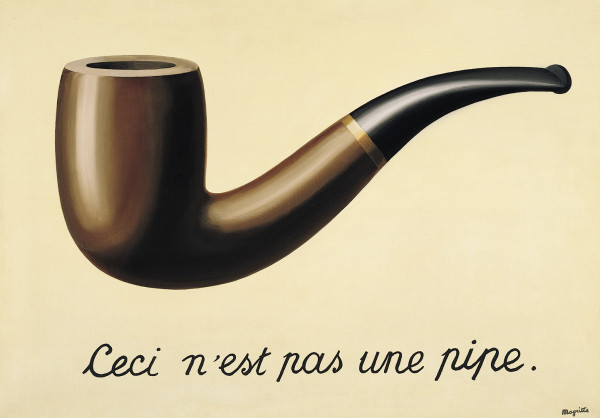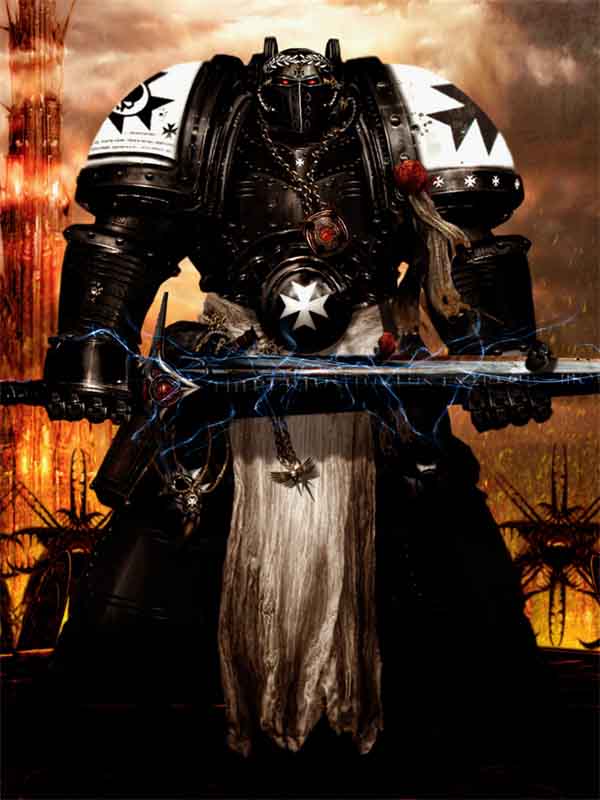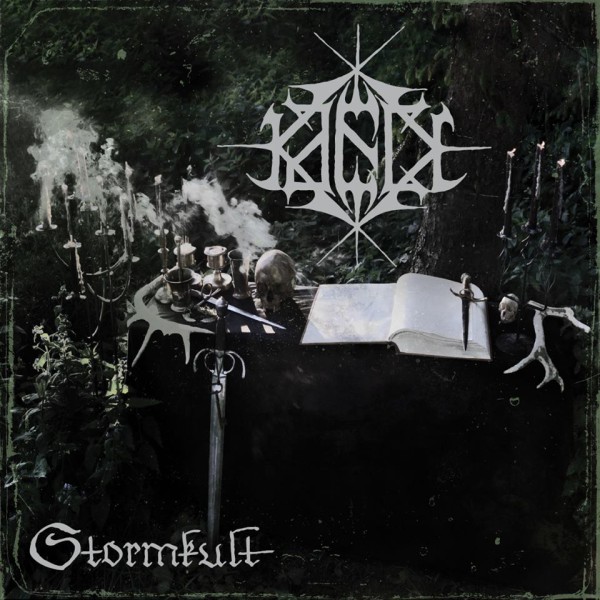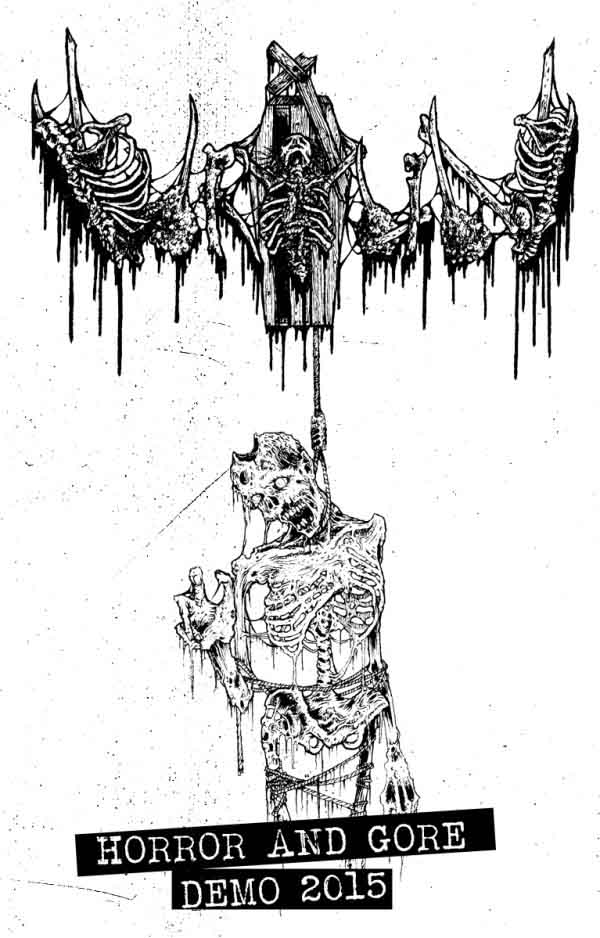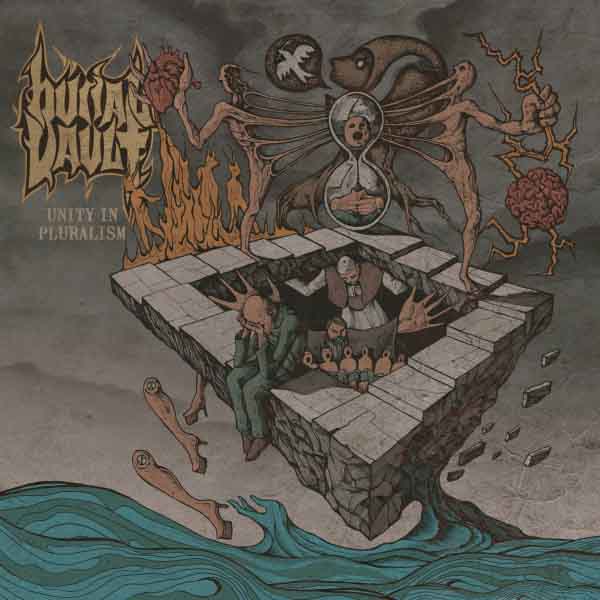The old saying goes that those who love to use tobacco smoke cigarettes, and those who love tobacco smoke cigars and pipes. The cigarettes give you a quicker hit because the lungs, with their much vaster absorption area, deliver nicotine to the brain within about three seconds. The cigarette ends within three to seven minutes and the craving subsides momentarily. With pipes and cigars, the nicotine slowly oozes in through the mucus membranes in the mouth, tongue and (sometimes) throat, creating a stronger dose of nicotine but without the sudden “falling off a cliff” sensation. Many metalheads smoke cigarettes, but more are branching out to pipes and cigars for the flavors, more intense dosage and less damage to the body.
Please do not read this as an anti-cigarette rant. They are wonderful, in their own right, and much less work than cigars or pipes. However, burning any leaves and inhaling them directly into your lungs 10-20 times a day would cause some kind of long term health problem as gunk — tar, ash and irritants — builds up on the alveoli. On top of that, our industry and lawmakers have decided to mandate all sorts of processing of the tobacco, so who knows what else is being inhaled. If you would not mind going into a fast food joint, taking home their lettuce, dehydrating it and sitting next to a giant pile of it burning all day, cigarettes might not bother you. And keep in mind that there are brain-boosting benefits to nicotine in addition to resistance to neurodegenerative disorders, an effect which you do not get with the charred salad.
Cigars are beyond the scope of this article, but pipes are its focus. Pipes are essentially little wooden, stone or clay cups for burning tobacco with an inhalation tube attached. The smoker fills the pipe loosely with tobacco, then ignites it with some of the many means available to us ex-hominids, inhaling the smoke into his mouth and savoring it before blowing it outward into the personal space of those around him. While the topic of smoking pipes merits a full book, this article provides an introduction to pipe smoking designed to be as simple and low-cost as possible.
***
To get started, you will need:
- A pipe. Generally between $35-$65 for a good starter pipe. Look for 0.7inch diameter bowls and filterless stems. This tool may help.
- Tobacco. This comes in tins and bulk, usually found at Brick and Mortar (B&M) shops, and Over the Counter (OTC) usually found at drugstores and supermarkets.
- Pipe cleaners. Each time you smoke, you will want to clean your pipe. Pipe cleaners have two ends, so that is two smokes per cleaner. It is not a terrible habit to include a bundle or package of these each time you buy tobacco.
- A pipe nail. Demystifying this tool: it can be as simple as a key. You use one end to cut up tobacco, allowing it to collapse into an ember, and the other to tamp it after you light it for the first time. Tobacco rises like a demon unleashed when touched with fire, but compressing it allows it to smoulder so you can sip the pipe.
- Fire. I favor the compressed cardboard matches in matchbooks, but you can use anything. For some, lighters and zippos taste horrible, so they prefer the match. The only trick is to burn off the tip before lighting.
To avoid the usual drama, let us launch into the process of smoking:
You go to some place with little wind, but some air circulation, where you have a comfortable chair. Sitting in it, you take out your tobacco. Holding the pipe over the tobacco container, let the shreds of tobacco fall into the pipe. When it is half-full, gently tamp with a finger. When it reaches the top, pinch from the center to one side and then the other, compressing the tobacco and letting it fall back into place. (Much has been written on this topic, usually under the unfortunate appellation of packing a pipe, when the correct word to use is fill: put tobacco into the pipe so there are no fully empty spaces, but fall short of compacting it so air — necessary for fire and smoke — can flow through. Ignore all other advice.)
Put the pipe in your mouth, holding it gently with teeth and firmly with lips. Light a match, and hold it vertically at a slight angle so the flame climbs the stalk of the match, then when the head has burned off, move the match over the tobacco in slow circles while inhaling. Take the smoke into your mouth and the top part of your throat if you wish, but try to avoid it leaking further down toward the lungs. You can compress it by gently blowing out the air from the front of your mouth, which draws in smoke from the pipe. The best way to inhale that I have found involves flaring the nose and drawing in air slowly but steadily.
My favorite cycle runs in seven second increments. For bigger mouthfuls, draw in your smoke, then keep it in your mouth for three seconds, then exhale and wait another four seconds. For slower sips, take one for about a half-second, then wait at least three seconds before the next. It helps to have a slight background circulation of air to keep the pipe oxygenated and smouldering well.
Many smokers do a “char and light” where they torch the top layer of tobacco, then tamp it lightly because it has risen up as it burned, and then light again to get the resulting compressed tobacco to blaze. At two-thirds through the bowl, it may be helpful to use a poker or the pointy end of your pipe nail to chop up the resulting ember and set it ablaze again. The lighting requirements vary between tobacco types, which will be addressed below.
When no more smoke comes out of the pipe, and you sense that the tobacco has been converted mostly to ash, tap it out into convenient bushes or a metal trash receptacle without a plastic bag. The ash will be hot and melt plastic. To tap out, hold the pipe in your hand and swing it downward to shake the ash out of the bowl. You may have to stir it with poker or nail beforehand.
Then comes the most important part of the ritual. If your pipe lacks a filter, run a pipe cleaner from the mouthpiece into the pipe and leave it there for a few minutes to absorb both direct and ambient moisture. This will keep your pipe fresh-tasting for its next use.
Pipe smokers vary. Some are hard-hitters who blaze through a bowl quickly, where others are sippers who have a pipe going all day for an hour at a time. If you re-light too frequently, or smoke too fast, the pipe may get hot; if this happens enough and to a great enough extreme, it may cause a condition known as “burnout” where the material of the pipe chars and cracks. To help avoid this, smoke on the seven-second method and also, allow some nice thick gunky tar to line the bowl, especially on the bottom. I always smoke some OTC aromatics, which are full of sugary flavoring that bonds together the goo and forms a kind of tar cement, down to the bottom of the bowl to layer it with a nice thick coating of glop. This glop chars over time and becomes a sort of pipe creosote that insulates against extremes.
***
Tobacco originates as leafy plant in the genus Nicotiana, which when cured, dried, pressed and shredded becomes a delicious flammable method of nicotine delivery. The great variations in what are called generically tobaccos occur in the different strains of tobacco plants, and the different methods used to grow, cure, dry, press, and cut the leaves.
That process produces a number of tobacco types, which are then combined in varying amounts into different blends, which you might think of as “tobacco recipes” because they achieve a unique flavor through the ingredients — different types of tobacco — mixed within them. These blends are also distinguished by their cut or how they are sliced, which is related to the flavor and tobacco characteristics in each blend. Many blends are then coated in flavoring known as “aromatic”; if the primary flavor to the smoking blend is the flavoring and not the underlying tobacco, the blend is referred to as an aromatic tobacco.
For the end user, tobacco is then shaped by another force — the consumer market — and placed into the following silos:
- Over-the-Counter (OTC). OTC tobaccos are designed for convenience. They are usually either aromatics or a type of shag-cut tobacco that is also used for Roll Your Own (RYO) cigarettes. These burn most easily, cost about $2 an ounce, and are generally mild in both flavor and nicotine level.
- Luxury. Like most things in our society, the good stuff only starts when you step off the mainstream and pony up some more cash. You would not buy Budweiser to drink, nor Marlboro to smoke, so you will choose a pipe tobacco made under the brand name of an established firm. A handful of producers make these tobaccos now, but they tend to be stronger and rely more on the flavor of natural tobacco, although many are also aromatics but with a wider variety of flavors than OTC.
- Boutique. A cottage industry has sprung up in making this variety of luxury tobacco which aims for unique and intense flavors, sometimes combining aromatic and unflavored tobaccos. These are more expensive than “regular” luxury and are made by a handful of blenders who also own mail-order tobacco shops.
- Vintage. In the past, everything was better. People have been saying that for generations, and apparently each were correct: the tobaccos of only 20 years ago were stronger and more flavorful. Luxury tobaccos, once considered regular tobacco, have been stored in sealed tins (if you buy one on eBay, make sure it is also “unopened” as opposed to re-sealed) and are now much sought-after.
I recommend starting with a solid OTC like Carter Hall, Prince Albert, Captain Black, Five Brothers or even Drum. These are the easiest to learn to pipe with, and give you a feeling for what mild levels of nicotine and flavor are like. In addition, they are low-cost so you will not howl and scream if you accidentally ruin a bowl or spill some.
You may find that these are pleasing enough for you and that you are content to smoke them for life. There is nothing wrong with this; many have done so and it provides the least fetishistic and complex smoking experience. Five Brothers stands out from most of these because it does not use aromatic flavoring or propylene glycol (PG), a moisturizing agent added to many OTC tobaccos. If your OTC tobacco comes out of the can or pouch and seems damp, it probably has a good dose of PG. Many aromatics, including those sold at the luxury level, also have this treatment.
From that point, the next stop is an entry-level luxury tobacco. I suggest going with a Dunhill blend because they are widely available, not overly flavored, and tend to be sliced for easy burning. You can generally get a tin of 50g/1.76oz for about $9 online or $15 in the real world, if you are in the United States; this will vary with local tobacco taxes. You may notice that you are paying quite a bit in taxes throughout this whole process, and wonder if that is in fact the impetus for the whole societal jihad against tobacco. Keep wondering. In places like Canada and Europe, they pay multiples of what you pay here. Scary.
At this point, I would stop moving up the ladder. Boutique blends are a variety of luxury blend that costs more and has more unique, ironic, oddball, quirky, and otherwise off-the-beaten path blends. However, it tends to be lower in nicotine content and it is unclear whether these weird little blends are actually that distinct from their archetypes. There are only so many types of tobacco and while many different combinations can be made, most of them resemble a few fundamental types. I have never ventured into Vintage tins and can say that, while undoubtedly these older blends were of a finer quality, that may not have been preserved over the years. Nicotine levels especially degrade. To my mind, the piping experience cannot be separated into “taste” or effect but must include both, and so the fetishism with flavor — even if grounded in science and experience — strikes me as perhaps being a mistake.
Tobacco comes in several cuts which reflect how the leaves are presented:
- Shag. Cut laterally across the leaf, leaving an interlocked mess like peat moss that loads easily and burns well.
- Ribbon. “Normal.” Thicker slices that seem to be vertically up and down the leaf.
- Flake -> Ready Rubbed. Flake occurs when tobacco is pressed in blocks and then sliced; Ready Rubbed is the result of “rubbing out” those slices.
- Plug. Tobacco is pressed together and allowed to mature that way, then cut into little pucks.
- Cake. Like a plug, but loosely packed, resulting in a crumbly “coffee cake” style.
- Cube. Cross-slicing the tobacco produces tiny cubes; sometimes hard to keep lit.
- Twist -> Slices. Tobacco is twisted in plugs or flake is re-twisted in tubes, then cut into little “coin” shaped bits called slices.
The above simplifies a fairly complex process. You might also enjoy these viewpoints from P&C blender Russ Ouellette and Lane Limited manager Leonard Wortzel.
Multiple types of tobacco dot the landscape. These refer to the strain of tobacco plant and how it was cured and prepared. These are:
- Burley. Think cigar leaves. This air-cured tobacco has a nutty flavor and higher nicotine and oil than most others. It is used to complement other tobaccos in blends, and is known for its tongue “bite” from high alkalinity.
- Virginia. High sugar content and sweet natural taste make this type a favorite in many blends. Although this tobacco comes in many colors, its flavor stays within the mild range and makes it the basis of many blends.
- Cavendish. This term applies to any tobacco that has been aged and cured with a heating process that brings out a fuller taste.
- Latakia. This is Oriental tobacco which has been cured with smoke from burning oak, pine, juniper and yew wood to give it a bittersweet taste.
- Oriental/Turkish. Sweet and low in nicotine, this is tobacco grown using the Eastern method of low soil nutrients and plenty of sun, which produces its fragrance and flavor.
- Perique. Fermentation in its own juices after Burley tobacco is pressed into barrels gives Perique a spicy-sweet flavor. This is generally an additive to other blends to give them some spark
- Dark Fired. Leaves are cured with smoke under carefully managed heat and humidity, producing a blend both strong in nicotine and flavor. It is used as an additive more than a main ingredient because of its intensity.
For more information, check out Russ Ouellette’s descriptions.
These are used in the following blends:
- English. Mostly Virginia, with Latakia for body and Oriental tobaccos to provide spice.
- Scottish. Similar to an English blend, the Scottish blend uses less Latakia and more Virginia, with little or no Orientals.
- Balkan. Strong in Orientals and Latakia, this tobacco blend uses Virginia to balance those dominant flavors.
- American. Although there are some similarities to the English, the American blend uses more Virginia with possible Cavendish or Kentucky style tobaccos.
- Danish. These resemble the English, but with a deeper flavor and less spice, using more Burley and Cavendish but emphasizing stronger, more balanced flavors.
You will probably find yourself shopping by blend, which could be a substitute term for flavor. What type of smoke do you wish to taste tonight? There are several indexes for ranking different blends:
- Harshness. How much acridity and bite there is. Strong smoke can be hard on the smoker, and “bite” is created by the alkalinity of the tobacco, which raises the pH and increases absorption of nicotine but may also cause a tangy burning sensation on the tongue.
- Strength. You are smoking a nicotine-bearing plant. How much nicotine is delivered? A tobacco with high nicotine may be worth pounds of low-nic fruity aromatics.
- Note. This refers to the smell left behind after the tobacco is burned. This influences both your taste of the tobacco, and what your friends, family and coworkers experience.
The de facto standard for tobacco assessments is Tobacco Reviews. Like other crowd-sourced sites such as Wikipedia and Metal-Archives, or reviews on Amazon, it is good for basic factual information and opinions from people whose judgment you have verified and who — as a result — you trust. It is not good for randomly reading reviews because most of them are written by twitchy, bitchy and queeny internet consumers who complain about all the wrong things, like all the irrelevant, and miss the point. Some of the tobaccos rated highly by this site’s users are excellent, but others are simply quirky hipster fodder. Tread carefully, and consider using the various pipe forums out there: Puff, Pipes, Smokers Forum, and Tamp and Puff. The private reviews at this location have endured because they are frequently strikingly accurate. The main point is: find someone whose opinions you respect and tastes who align with yours, even if the exact opposite of yours, and you can figure out what you will like.
***
A word on lighting pipes: some prefer magnifying glasses and sun, others coals from the fire, still others matches and apparently, most like either butane lighters or Zippos. As a diehard match user, I can say that matches fail in the wind, and there is more wind that you might think, but that they seem to create the least influence on taste. Perhaps a laser is appropriate.
The pipe world is full of both facts and lore. Lore refers to anything passed on by groups of humans in social circumstances; the idea is that if it survives a dozen generations, it might be true. In the meantime, you will be wading through mountains of nonsense and worst of all, unnecessary complexity added by people who wish to seem profound or wise. Pipe-smoking is simple: you are lighting dried leaves in a tube and inhaling. The rest is mere adjustment.
The following resources may be helpful for those seeking to know more:
Here are some good places to go shopping for pipes and luxury tobacco:
- Smoking Pipes
- West Virginia Smoke Shop
- Pipes and Cigars / Cigars International
- Pipe and Leaf
- The Pipe Guys
- Mars Cigars and Pipes
- Pipe Place
- 4noggins
- Payless Pipes
- Cup O’ Joes
Places to buy OTC tobacco, which online is sold in bulk:
Resources for those who wish to grow or blend their own tobacco:
Tobacco blenders and brands:
- Altria/Phillip Morris
- Ashton
- Cornell & Diehl
- Gawith, Hoggarth and Co.
- G.L. Pease
- J.F. Germain
- Kohlhase & Kopp
- MacBaren
- McClelland
- Nat Sherman
- Orlik
- Peterson
- Peter Stokkebye
- Samuel Gawaith & Co.
- Scandinavian Tobacco Group
- Sutliff
- Villiger
If you do not see your favorite blend, it is probably an imprint licensed to and manufactured by a larger group, or a boutique variety manufactured by one of the tobacco shops linked above.
For kicks, here is a list of famous pipe smokers. You can add me on there when I get famous, but be sure to mention I detest wimpy tobacco and think it should leave the hall.
Finally, the best metal for pipe smoking…
http://www.youtube.com/watch?v=DnUZ5xpcKHw
10 CommentsTags: cigar smoking, cigars, nicotine, pipe smoking, pipe tobacco, pipes, smoking cigars, smoking pipes, tobacco
